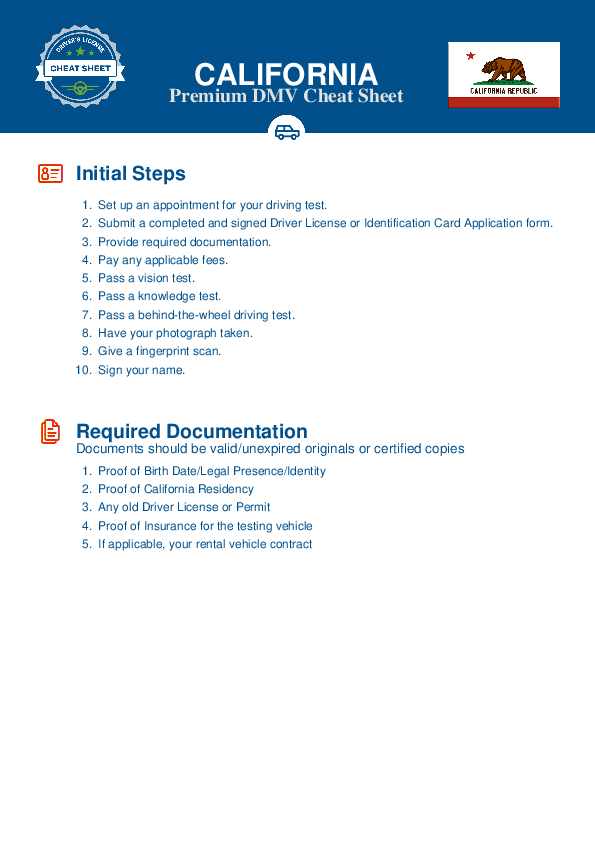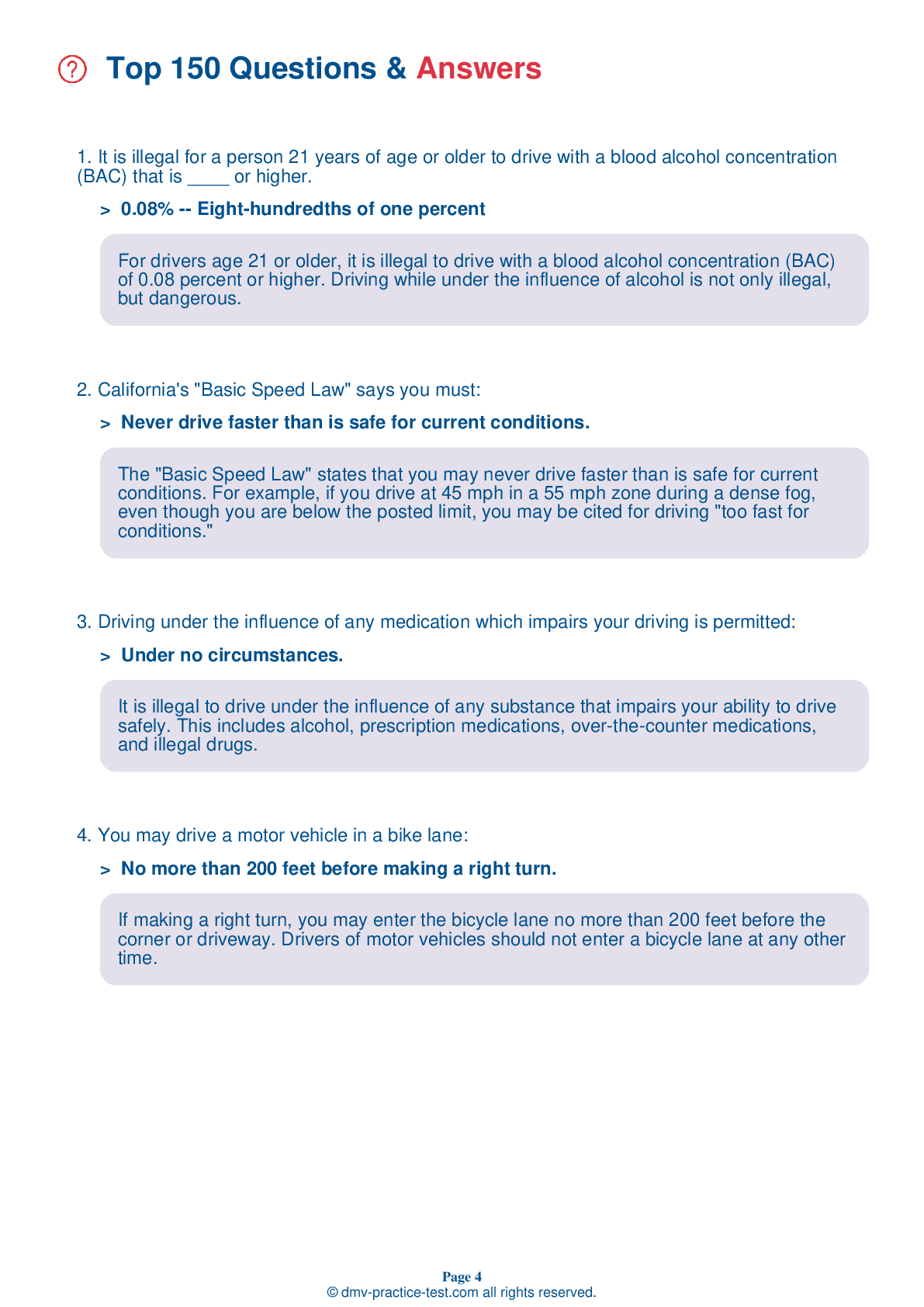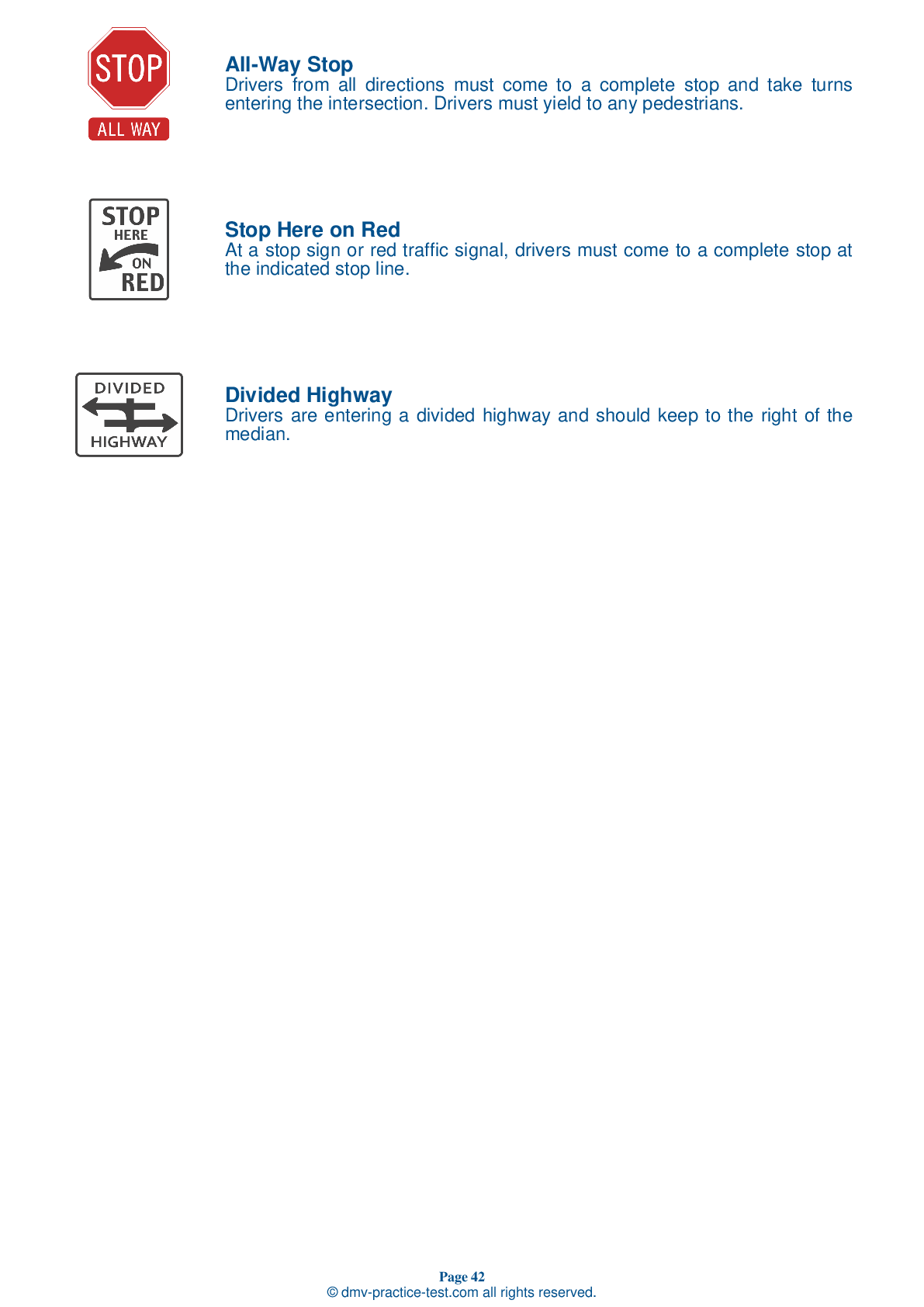FREE California DMV Practice Test #22 Page 5 of 6
This California DMV practice test includes 36 of the most vital road signs and rules questions taken directly from the official California Driver Handbook for 2025. Use genuine questions that are very similar (often identical!) to the DMV driving permit practice test and driver's license exam to prepare for the DMV driving permit test and driver's license exam.
To help you recall the topics, each ca dmv practice test question includes a hint and explanation. The written component of the official DMV test will consist of questions about regulations of the road, traffic signs, and driving statutes, as well as information from the Driver Handbook.
To get the required 83 percent passing score to be allowed to pass, you must correctly answer 38 out of 46 questions (or 30 out of 36 if you are over 18). Use this DMV practice exam to help you prepare for your California instruction permit or driver's license.
How does it work?
California residents using any form of testing help during the test will result in an automatic failure, and the DMV may take further action against your driving permit, so please don't cheat.
Ideally suited for:
- California Driver’s License
- Driver's Learner Permit in California
- CA Refresher Test for Senior Citizens CA
- CA Driver’s License Renewal
What to expect on the CA DMV exam:
- 36 questions
- To pass, you must have 30 accurate answers.
- a passing grade of 83%
- The minimum age to apply;15 ½
25 . When a school bus is stopped on the road ahead to load or unload children, you must:
When a school bus is stopped on the road ahead with its lights flashing and its stop arm extended, you must come to a complete stop and wait to proceed until the lights have stopped flashing and the stop arm is withdrawn. Even after the bus begins to move again, do not proceed until you are sure there are no children crossing the road ahead of you.
26 . Prior to entering a curve:
You may drive more slowly than the posted speed limit, based on road conditions, but it is illegal to drive any faster than the posted speed limit. Some conditions which require reduced speed for safety include approaching curves or hills where visibility is limited, driving on slippery roads, and driving on roads where animals and pedestrians are present.
27 . You may not park your vehicle:
No stopping, standing, or parking is permitted next to a red painted curb. However, buses may stop in a red curb zone marked for buses.
28 . You should allow an extra cushion of space:
Drivers of trucks, buses, vans, or any vehicles pulling campers or trailers may not be able to see you if you are driving directly behind them. Increase your following distance when driving behind one of these vehicles. Additionally, large vehicles can block your view of the road, so increase your following distance to look around the sides of the vehicle and see the road ahead.
29 . You may be able to identify an aggressive driver by:
While driving, you should remain aware of the actions of surrounding drivers. If you notice an aggressive driver nearby making erratic or improper lane changes, you should not challenge them. The safest way to handle an aggressive driver is to get out of their way.
30 . You want to park uphill on a two-way road and there is no curb. Which direction do you turn your front wheels?
When parking either uphill or downhill on a road that has no curb, you should turn your wheels so that the vehicle will roll away from the center of the road if the brakes fail.
See the exact questions that will be on the 2025 California DMV exam.
99.2% of people who use the cheat sheet pass the FIRST TIME
LT gives us an insight on how the cheat sheet provided her with all the study questions she needed before taking her test.
Joe initially studied with the handbook and failed his test, he eventually found us online, studied and pass his test the first time around.



